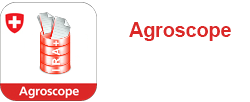Ruminants occasionally face contamination incidents of persistent organic pollutant (POP; e.g., dioxins/furans) with economic and social damages (Driesen et al., 2022). Understanding the fate (absorption, distribution, metabolism, and excretion, ADME) of POPs at the animal level is key to ensure the safety of livestock systems. The rate of feed-meat transfer of POPs depends on animal physiology and feeding, as well as on contaminant physicochemical properties (Driesen et al., 2022). The objective was to explore this complex animal×diet×contaminant interaction using a mechanistic model and evaluate the effects of breed, growing rate, dietary lipid concentration and contaminant lipophilicity on feed-to-meat accumulation kinetics. The growing cattle PBTK model is promising to address the effects of different livestock systems on ADME and explore the complex animal×diet×contaminant interplay. Ongoing developments include the assessment of the model predictive capabilities to deliver a practical tool for risk assessors and managers, and ultimately contribute to beef meat chemical safety.
Albechaalany J., Loncke C., Driesen C., Schmidely P., Ortigues-Marty I., Zennegg M., Sauvant D., Lerch S.
Effects of breed, growth rate and dietary lipid concentration on lipophilic contaminant accumulation into growing cattle: insight from a physiologically-based toxicokinetic model.
In: 10th Workshop on Modelling Nutrient Digestion and Utilization in Farm Animals. 18 September, Alghero (IT). 2022.
Download inglese (338 kB)
ID pubblicazione (Codice web): 52676 Inviare via e-mail
Precedenti progetti










